If you have been shopping for high end office chairs, there is a good chance that you are comparing the Herman Miller Aeron to the Embody. These are two of the most recognizable chairs from the most reputable manufacturer. So how do these two chairs stack up to each other? I have spent hundreds of hours in both chairs over the past three years, and here are my thoughts on these two classic office chairs.
Full Disclaimer: We are an office furniture dealer and sell some of the top ergonomic chairs we review. To learn more about the products we sell, our review process and why you can trust us, please visit: Why we’re different. Who is BTOD.com and The Breakroom Blog?
Aeron Vs Embody Links
1. Aeron vs Embody 2025 Price
To start, the Embody now costs about the same as the Aeron when you order the Aeron fully loaded. With the Embody, there aren’t a lot of upgrade options. The chair essentially comes with everything for a price tag of $2,305.00. If you want to save some money on the Aeron, you can remove some of the upgrades, but I recommend going with a fully loaded version so that you can get the most out of the chair.
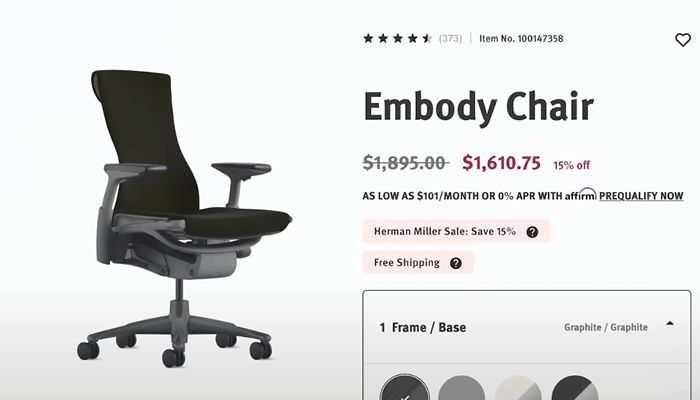
2. Herman Miller Build Quality
I don’t think you gain anything when it comes to build quality on the Embody. Much of the price difference comes down to some of the newer technology in the Embody’s seat back. Herman Miller put a lot of research and development into the back and it is expensive to make. However, the Aeron is still one of the most well-built chairs we’ve seen. It can last for decades in the field. Both are phenomenal chairs that have held up great over the past three years.
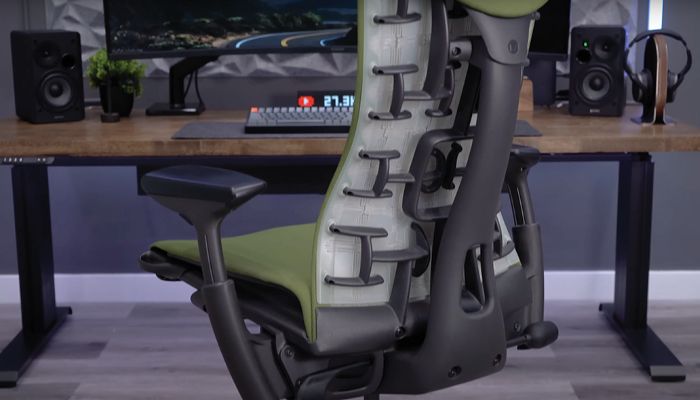
3. Sizing
The chairs do have some big differences when it comes to sizing because the design of each chair is guided by a different school of thought. The Aeron comes in three different sizes labeled as A, B, C. The A model is the smallest, the B is the most universal, and the C is designed for larger users. Essentially, the chair isn’t necessarily adjustable enough to fit the full range of people, so you really need to pick the best fit.
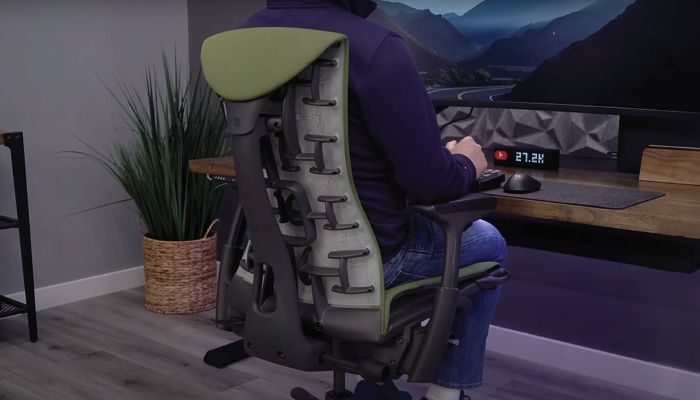
The Embody, on the other hand, has more adjustability. It has an unrestricted frame and a seat depth adjustment so that the chair can be made to fit the individual, rather than the individual trying to fit the chair.
4. Adjustments
Next, the chairs come with different adjustability packages. The Embody has a nice toggle control seat height adjustment that offers a nice range to the majority of the population. One nice feature is the seat depth adjustment allows you to pull the seat out or retract so that it hits the back of your legs just right. The adjustment is a big win over the Aeron, which doesn’t come with a seat depth feature.
The Embody comes with two-way arm adjustments. You can adjust the height and the width and both features come with a lot of range. The width adjustment is the source of a lot of complaints because operating it can feel clunky. It can be difficult to get it into the right position, but once you have it locked in, the armrest will hold the position well.

The Aeron arms are easier to use and adjust more. They definitely accommodate more typing and working positions. The four-way adjustability is an advantage over the Embody.
Both chairs feature the iconic Herman Miller harmonic tilt mechanism that provides an incredibly smooth recline. The Aeron also comes with a forward seat tilt option. This allows you to work in a forward position for intense tasking. However, the Embody does offer an additional locking position for the recline for a total of four options. You can sit upright, use two intermediary positions, or use the full recline range.
The chairs also come with a tilt tension adjustment so that you can control how hard or easy it is to recline. Essentially, you are getting a great recline feature with both chairs. The deciding factor may be whether the forward tilt or extra locking position are important to you.
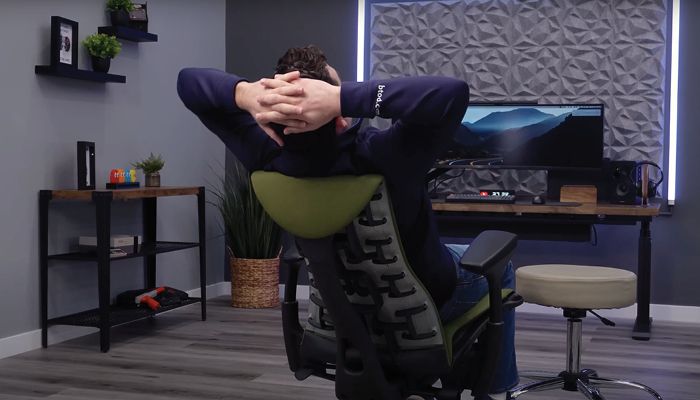
The lumbar support is the last adjustment we will look at. The Embody doesn’t have an adjustable lumbar, but the chair does offer a nice “S” shape that matches the curve in your spring. For me, the lumbar support is a little too pronounced and there is no way to dial it back. The only option is to use the independent back angle adjustment to move things around, but adjusting the lumbar isn’t the intended function of this feature.
The Aeron comes with more lumbar support options. You can choose a chair with no lumbar support, go with the chair’s standard height adjustable support that includes a horizontal pad that can be moved up and down or you can opt for the PostureFit package. This last option comes with plenty of vertical range and a dial so that you can adjust the level of lumbar support. With all that, the Aeron offers a more adjustable and comfortable lumbar support.
5. Aeron vs Embody Comfort
Starting with the seat comfort, the Embody is much more comfortable. The seat is wider and more forgiving than the Aeron. It is also flexible and feels comfortable in any position without inhibiting the user in any way. The node system in the seat creates the feeling that you are simply floating in the chair.

The Aeron isn’t able to create that same suspended feeling that you would expect with a mesh chair. The mesh creates a very firm seat and you can often feel pressure points on the thighs because of the pronounced seat frame, and on the tailbone. The bucket seat design makes the chair rigid and hard so that you can’t really move around. Essentially, you have to sit in the exact position the chair was designed to hold. I found the Aeron got uncomfortable after sitting in the chair for long periods.
The Embody was actually designed to be flexible and encourage movement. You can easily shift around in the chair and use it however you want.
When it comes to arm pad comfort, the Embody has nice pads without any hard edges. The foam is soft and you can really dig your hand or elbow into the pad without being uncomfortable. However, the Aeron pads are even softer and come with more adjustments. It is nice to be able to move them back and out of the way of a desk or keyboard tray.
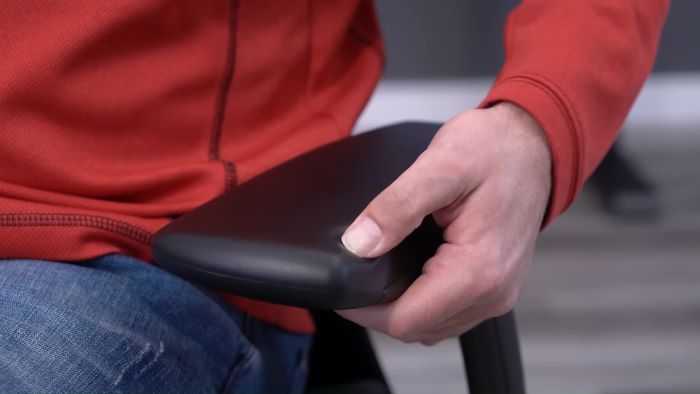
With the seat back, I do appreciate all the lumbar options that come with the Aeron, but I prefer everything else about the Embody seat. The Aeron back is rigid, much like the seat, making it difficult to move around and stretch in the chair. These constraints can become uncomfortable, especially over time.
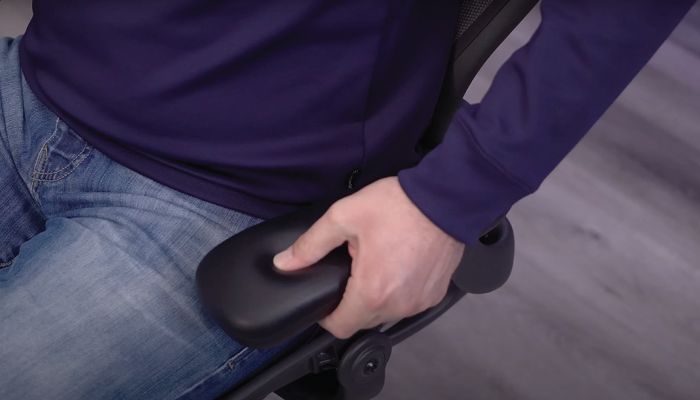
The Embody back is the opposite of the Aeron and is designed specifically for movement. You can use the chair however you want and it will continue to move with you and provide support. The pixelated system and flexibility are the main reasons why I have used the Embody so extensively.
The Embody is actually my third favorite chair behind the Leap and the CXO. The back on the Embody has a concave curve to it that can push your shoulders slightly forward. For this reason, along with the aggressive lumbar support, I typically have to switch chairs after using for a few weeks.
Bottom Line
Overall, I tend to lean more towards the Embody over the Aeron, especially from a comfort standpoint. I think that most people looking for a high-end office chair will be pleased with the Embody.
Additional Office Chair Resources






REC
Just purchased an Aeron after using an Embody since 2012. Immediately found that lower back pain I’d been having intermittently was alleviated greatly, after just several hours of use. The forward tile function in the Aeron makes this difference possible.
Second, the review made a specific point that the seat of the Embody was significantly more comfortable, and specifically cited a more forgiving and flexible seat as compared to the Aeron. This is baffling to me, as my experience is the complete opposite. I find the seat of the Aeron much more flexible and comfortable!
Just goes to show that a purchse of this magnitudel, for a chair that one will spend more time in than any other purchase (other than perhaps a bed) is very personal.
OzDoc
Really interesting and I agree with you on a lot of points, however I find there is no lumbar support pretty much at all on the Embody and sitting in it for a long time I get lower back pain (very lower back)
I sit in the Aeron and this disappears completely. The only reason I cannot buy the Aeron is due to me being 6 foot 95kg, the B size is too small (I’m sitting on the sides of the frame) and C is perfect in every way APART from when I sit right to the back (like you are supposed to) when the mesh goes down after sitting it hits the underframe at the back.
A simple design change would have fixed this and I would have had the perfect seat for me! I am so gutted, as never before have I felt my lumbar AND thoracic SO well supported just perfectly.
My partner felt the same (although in Size B) so we both ended up passing.
I sat in the Steelcase Leap and Gesture and whilst okay / good I didn’t find the lumbar / thoracic anywhere close to the Aeron so passed on those as well.
OzDoc
Really interesting and I agree with you on a lot of points, however I find there is no lumbar support pretty much at all on the Embody and sitting in it for a long time I get lower back pain (very lower back)
I sit in the Aeron and this disappears completely. The only reason I cannot buy the Aeron is due to me being 6 foot 95kg, the B size is too small (I’m sitting on the sides of the frame) and C is perfect in every way APART from when I sit right to the back (like you are supposed to) when the mesh goes down after sitting it hits the underframe at the back.
A simple design change would have fixed this and I would have had the perfect seat for me! I am so gutted, as never before have I felt my lumbar AND thoracic SO well supported just perfectly.
My partner felt the same (although in Size B) so we both ended up passing.
I sat in the Steelseries Leap and Gesture and whilst okay / good I didn’t find the lumbar / thoracic anywhere close to the Aeron so passed on those as well.
Eric
I’ve owned an Embody chair since 2012. Until the pandemic hit, I was pretty happy with it. But the long hours of work from home made me realize that there is a major design flaw with the seat of this chair. At least for me.
Since before the pandemic, I never spent more than two or three hours in the chair, I never realized this problem. Sitting eight or nine hours a day changed the game. The form of the seat, concave at the seat and the back junction, seems to be the source of the problem. I ended up, over the weeks of work from home, developing intense pain in the lower back, where it connects with the pelvis, to the point where I could only sit a few minutes at a time.
I had to put on a cushion, lined with a bed pillow, to be able to work without pain. And since that chair cost me a small fortune, I can’t afford to change it again. I am forced to keep it, even if I now find it rather uncomfortable.
I would not buy it again.